Sima Sharifirad
When a Tweet is Actually Sexist. A more Comprehensive Classification of Different Online Harassment Categories and The Challenges in NLP
Feb 27, 2019
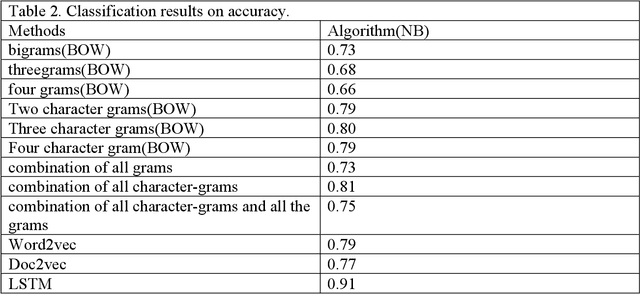
Abstract:Sexism is very common in social media and makes the boundaries of freedom tighter for feminist and female users. There is still no comprehensive classification of sexism attracting natural language processing techniques. Categorizing sexism in social media in the categories of hostile or benevolent sexism are so general that simply ignores the other types of sexism happening in these media. This paper proposes a more comprehensive and in-depth categories of online harassment in social media e.g. twitter into the following categories, "Indirect harassment", "Information threat", "sexual harassment", "Physical harassment" and "Not sexist" and address the challenge of labeling them along with presenting the classification result of the categories. It is preliminary work applying machine learning to learn the concept of sexism and distinguishes itself by looking at more precise categories of sexism in social media.
How is Your Mood When Writing Sexist tweets? Detecting the Emotion Type and Intensity of Emotion Using Natural Language Processing Techniques
Jan 28, 2019

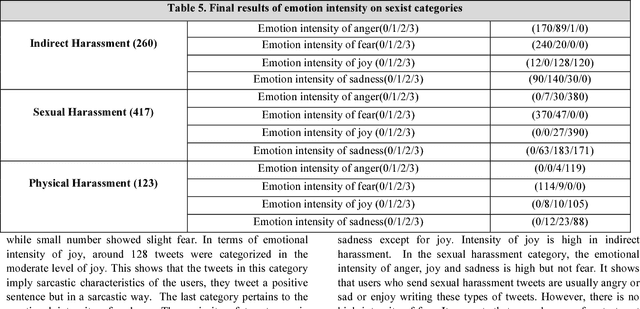
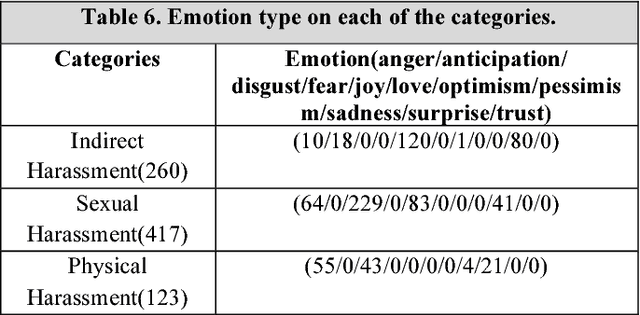
Abstract:Online social platforms have been the battlefield of users with different emotions and attitudes toward each other in recent years. While sexism has been considered as a category of hateful speech in the literature, there is no comprehensive definition and category of sexism attracting natural language processing techniques. Categorizing sexism as either benevolent or hostile sexism is so broad that it easily ignores the other categories of sexism on social media. Sharifirad S and Matwin S 2018 proposed a well-defined category of sexism including indirect harassment, information threat, sexual harassment and physical harassment, inspired from social science for the purpose of natural language processing techniques. In this article, we take advantage of a newly released dataset in SemEval-2018 task1: Affect in tweets, to show the type of emotion and intensity of emotion in each category. We train, test and evaluate different classification methods on the SemEval- 2018 dataset and choose the classifier with highest accuracy for testing on each category of sexist tweets to know the mental state and the affectual state of the user who tweets in each category. It is a nice avenue to explore because not all the tweets are directly sexist and they carry different emotions from the users. This is the first work experimenting on affect detection this in depth on sexist tweets. Based on our best knowledge they are all new contributions to the field; we are the first to demonstrate the power of such in-depth sentiment analysis on the sexist tweets.
Modified SMOTE Using Mutual Information and Different Sorts of Entropies
Mar 29, 2018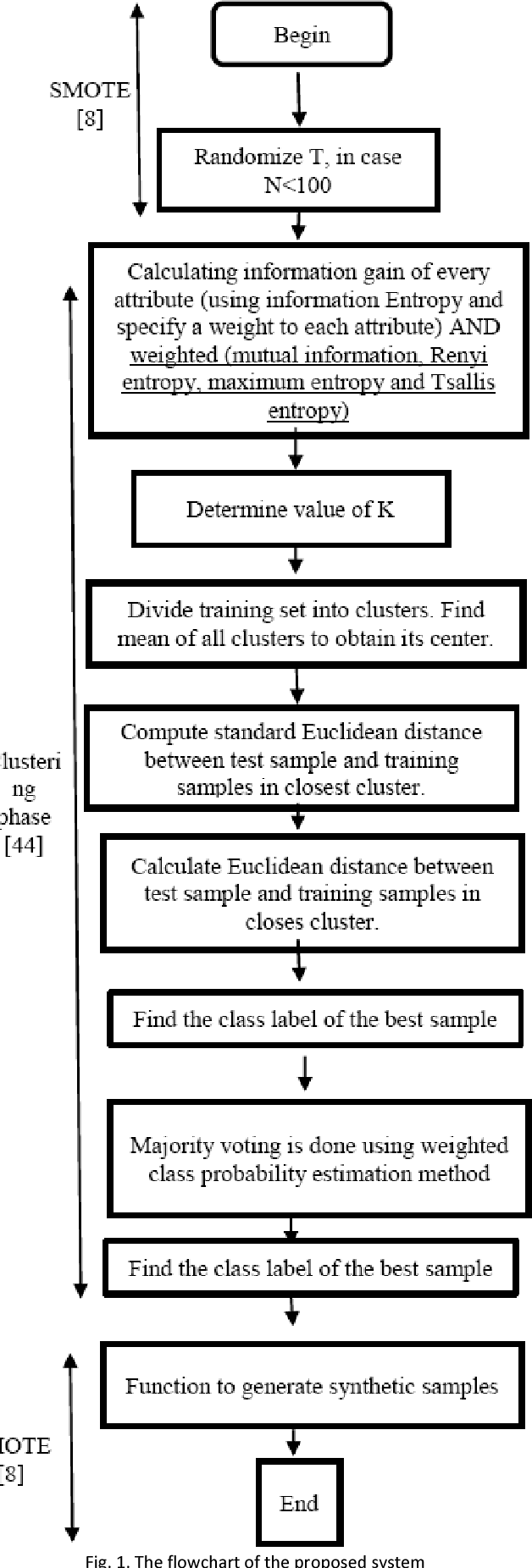
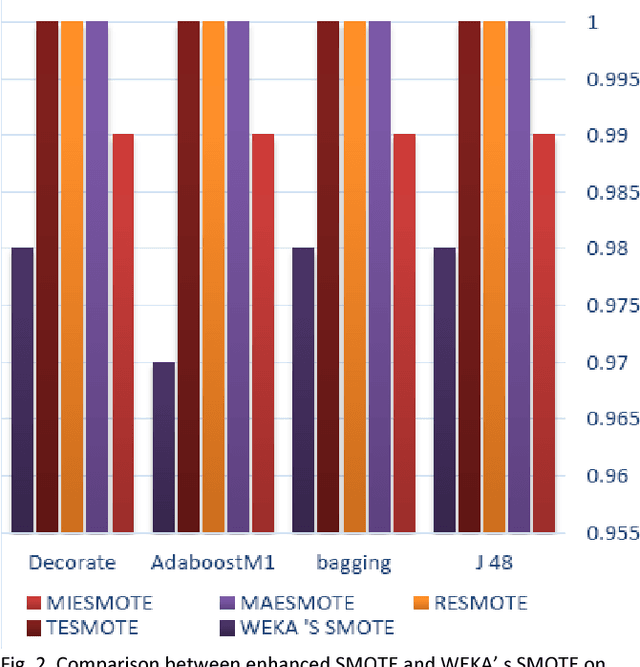
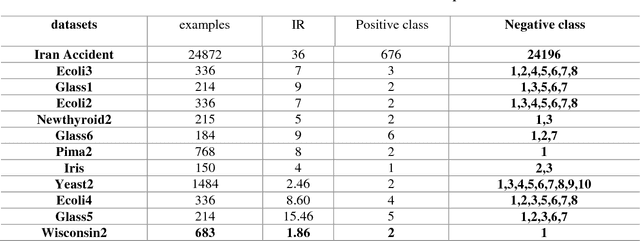
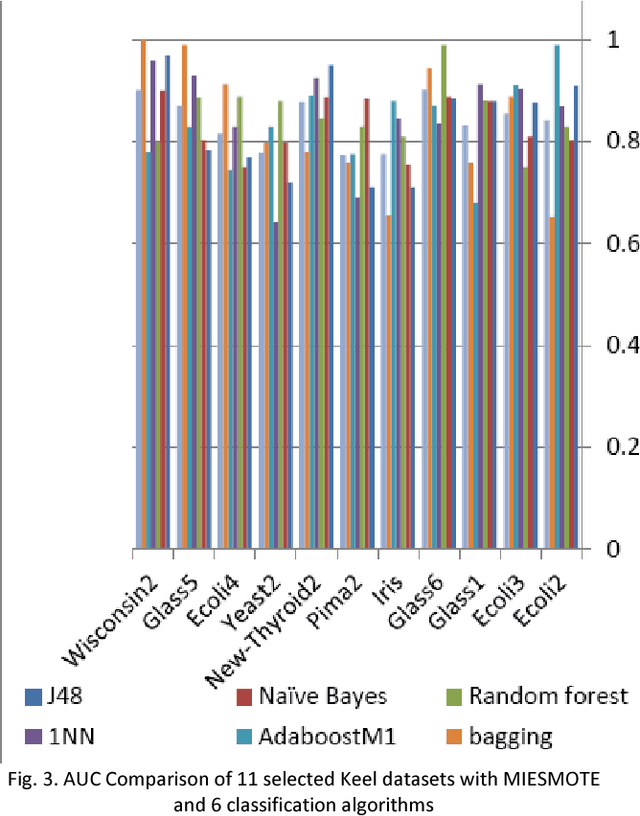
Abstract:SMOTE is one of the oversampling techniques for balancing the datasets and it is considered as a pre-processing step in learning algorithms. In this paper, four new enhanced SMOTE are proposed that include an improved version of KNN in which the attribute weights are defined by mutual information firstly and then they are replaced by maximum entropy, Renyi entropy and Tsallis entropy. These four pre-processing methods are combined with 1NN and J48 classifiers and their performance are compared with the previous methods on 11 imbalanced datasets from KEEL repository. The results show that these pre-processing methods improves the accuracy compared with the previous stablished works. In addition, as a case study, the first pre-processing method is applied on transportation data of Tehran-Bazargan Highway in Iran with IR equal to 36.
 Add to Chrome
Add to Chrome Add to Firefox
Add to Firefox Add to Edge
Add to Edge